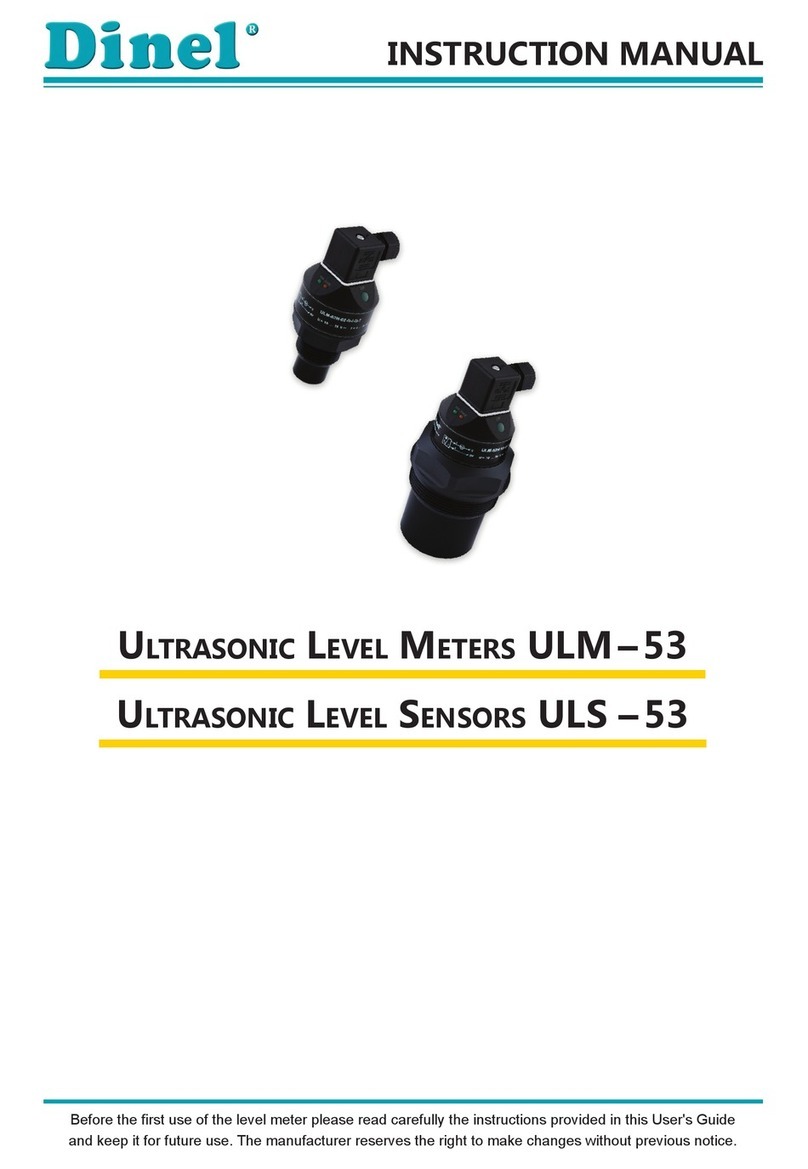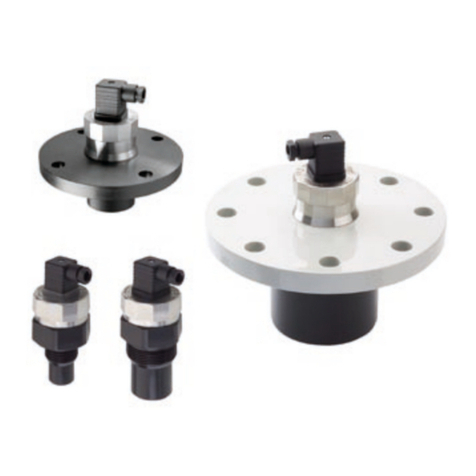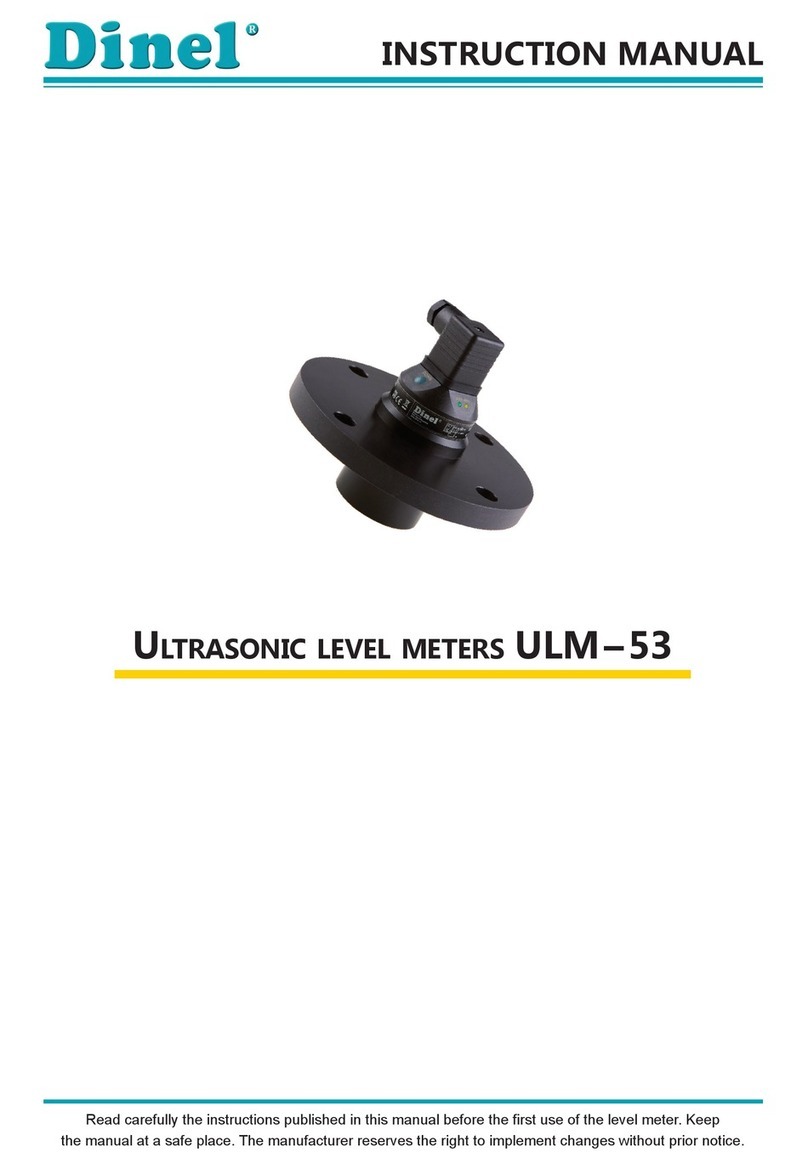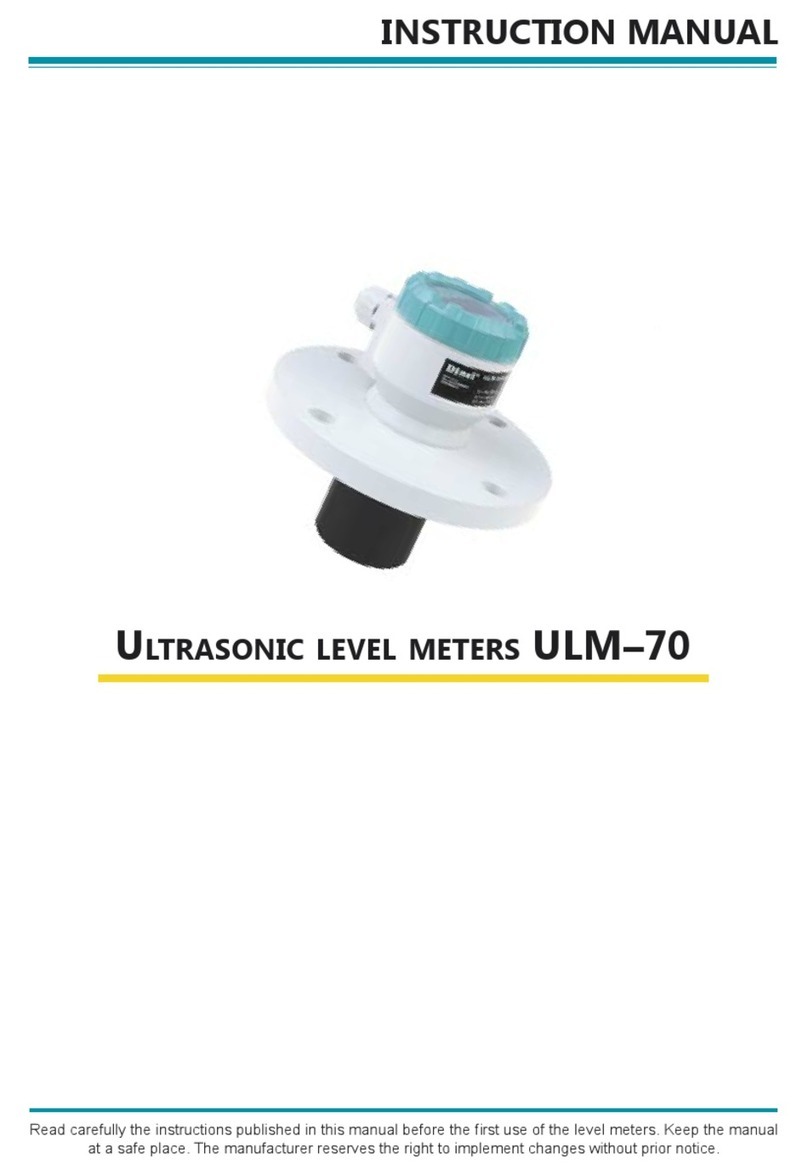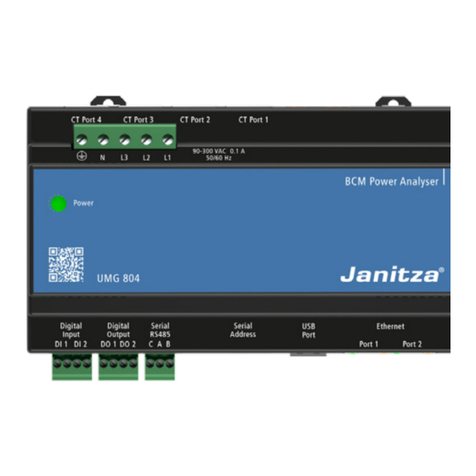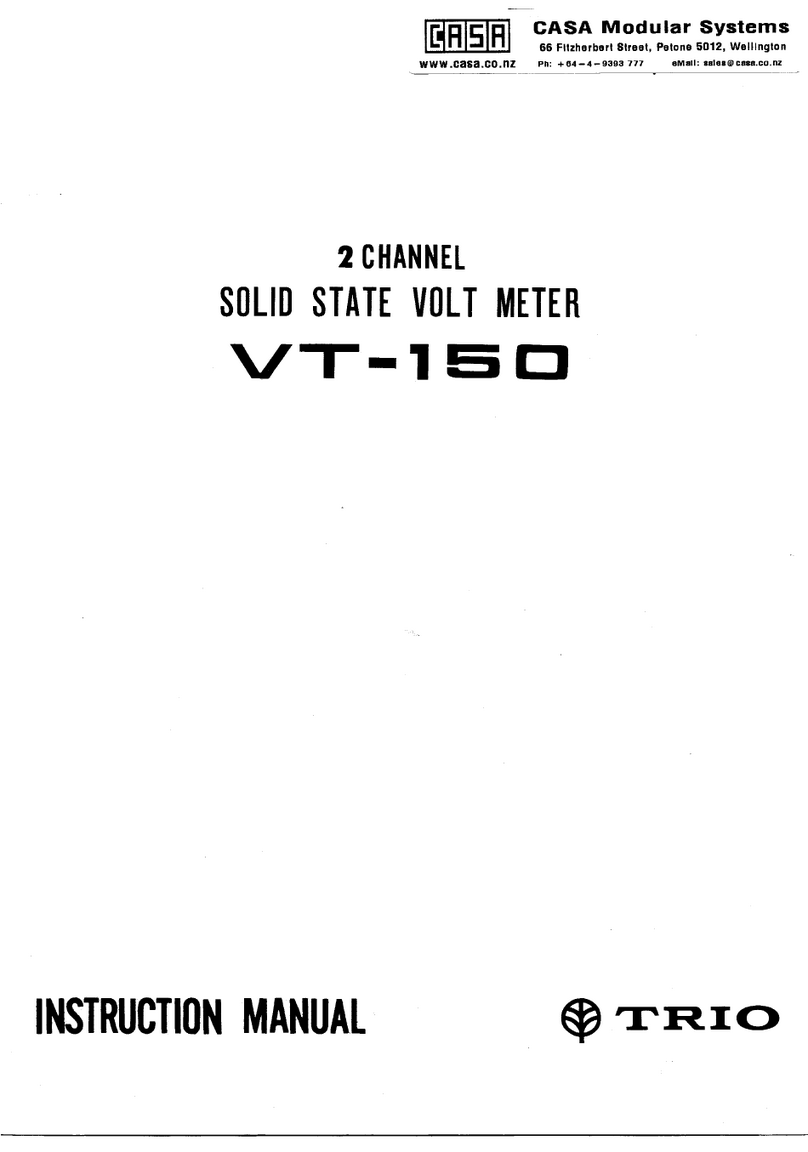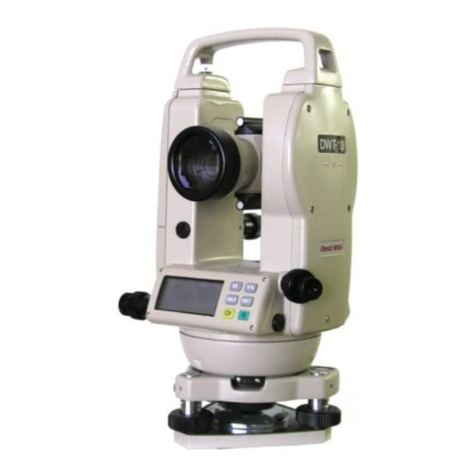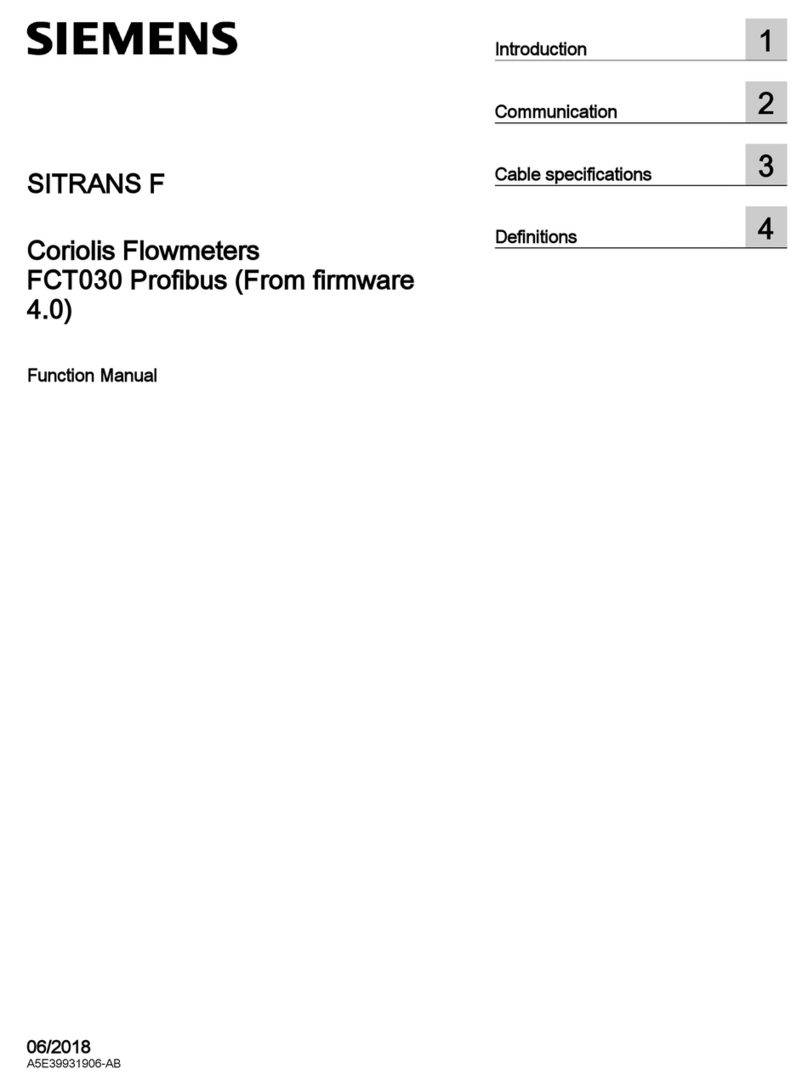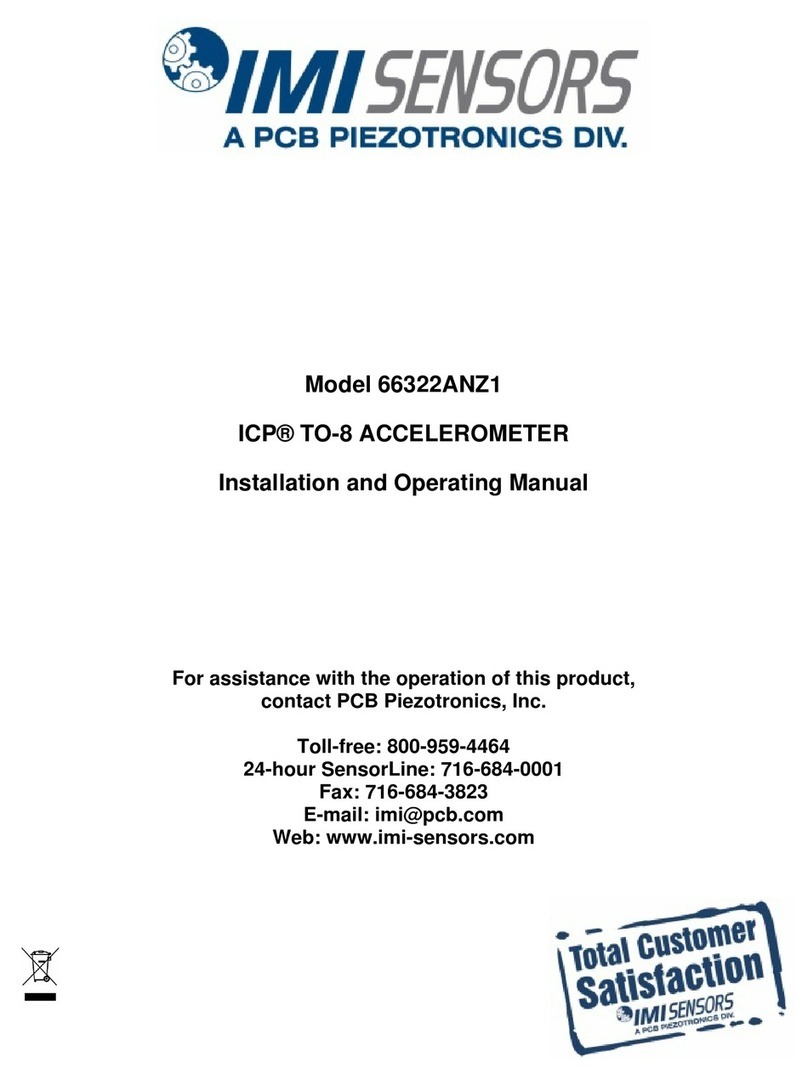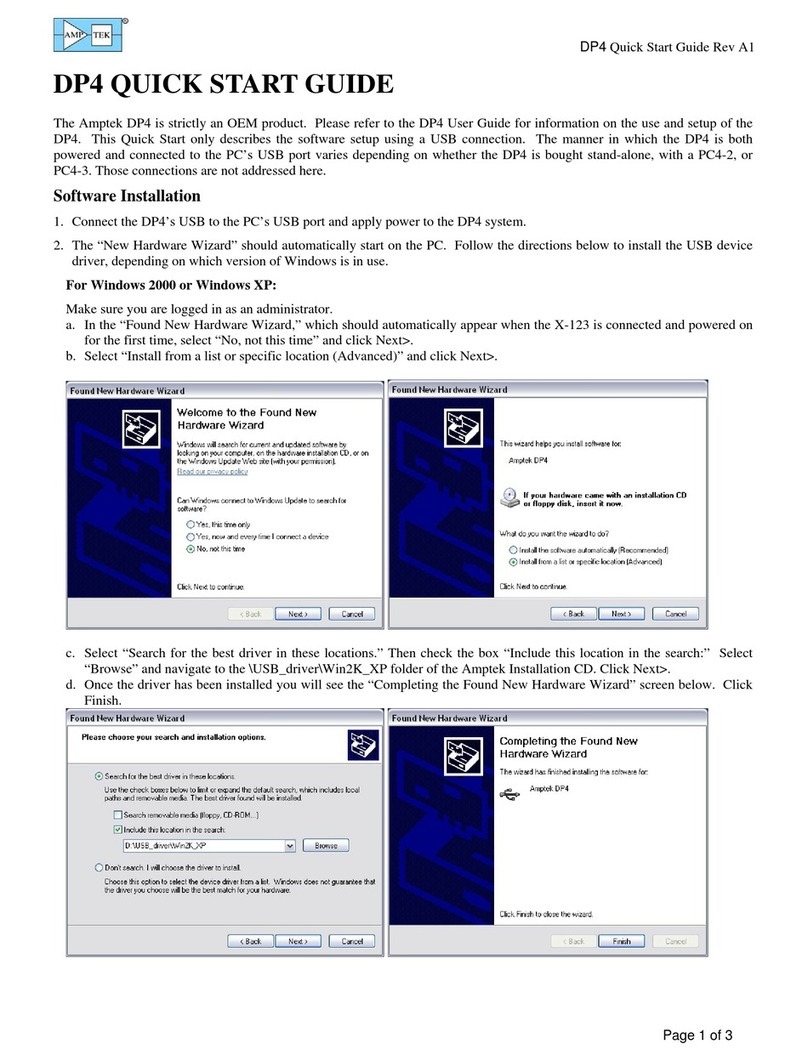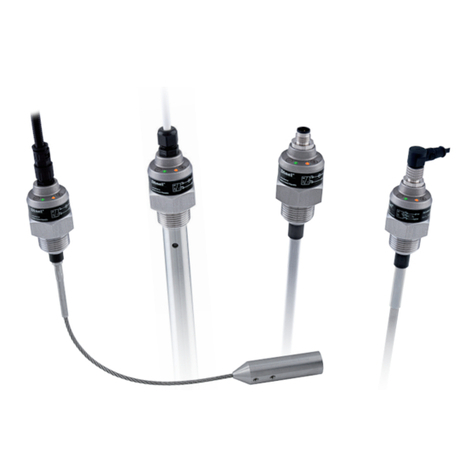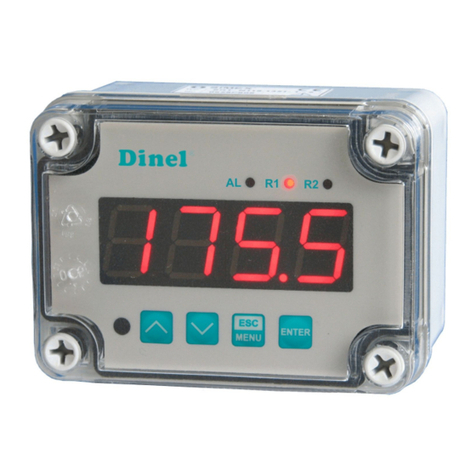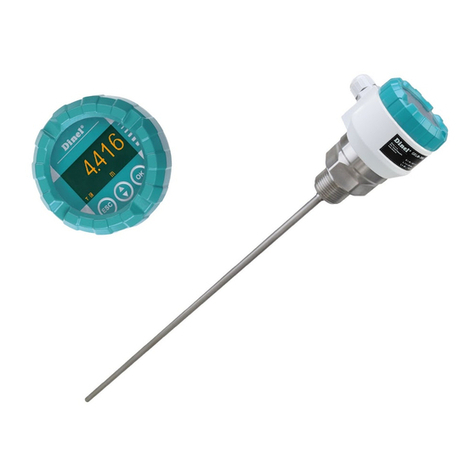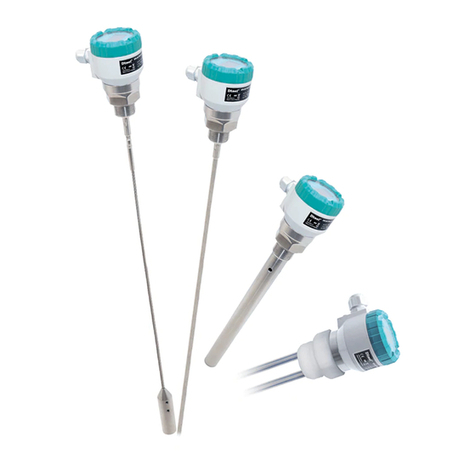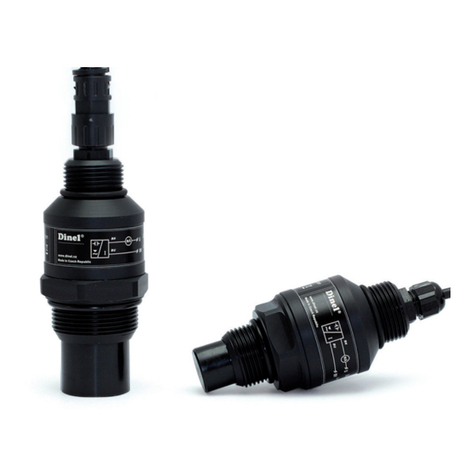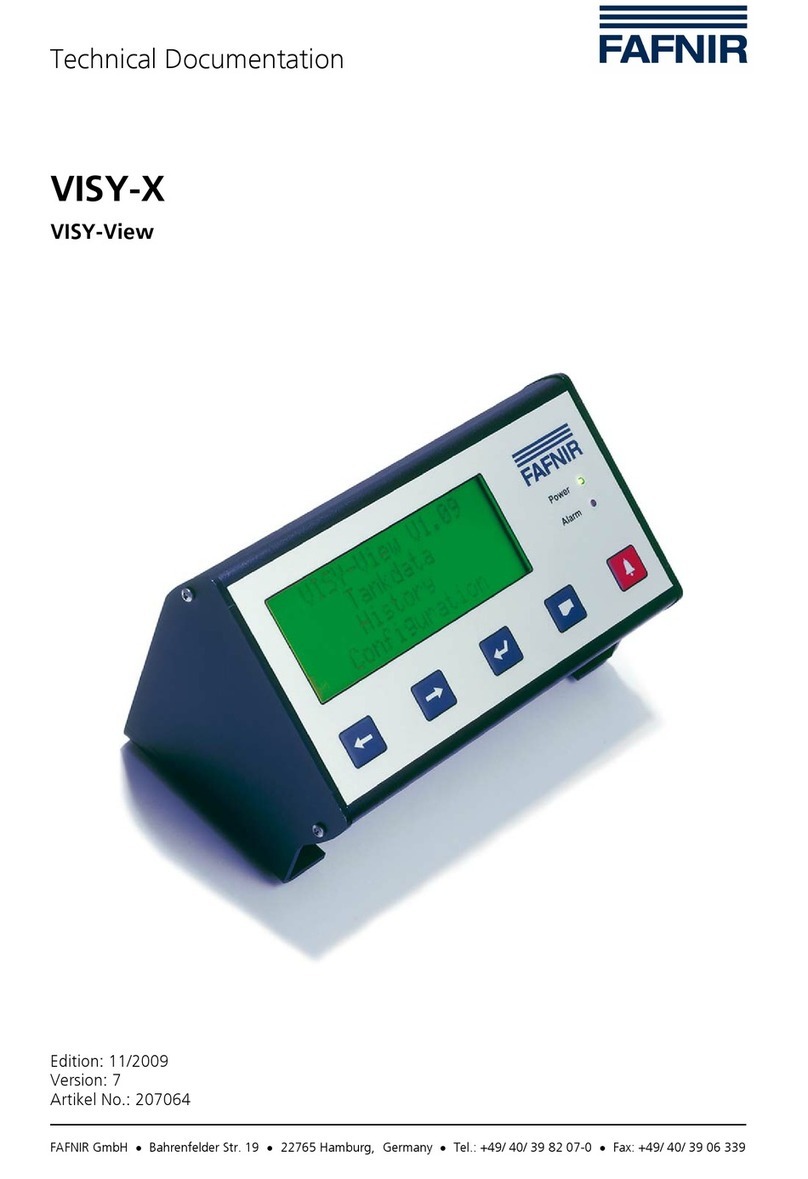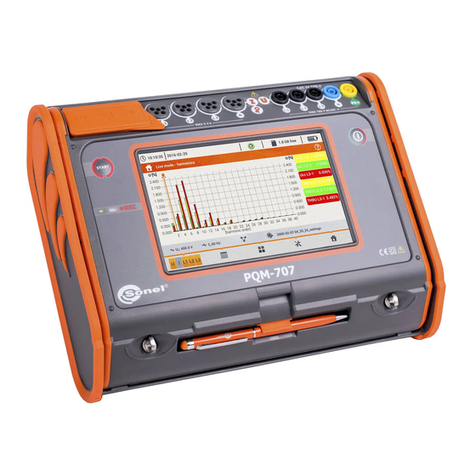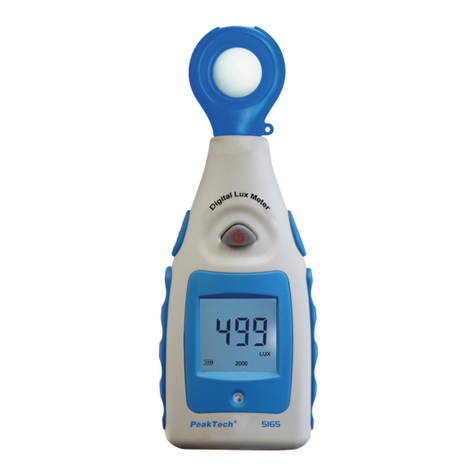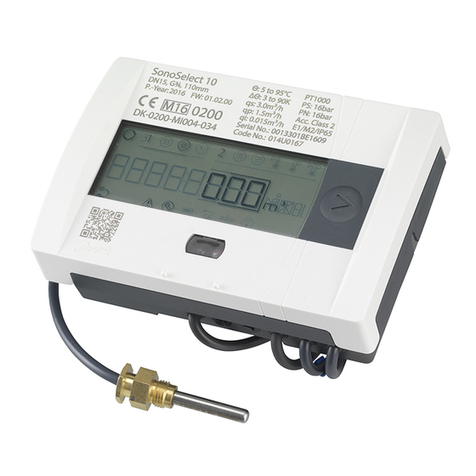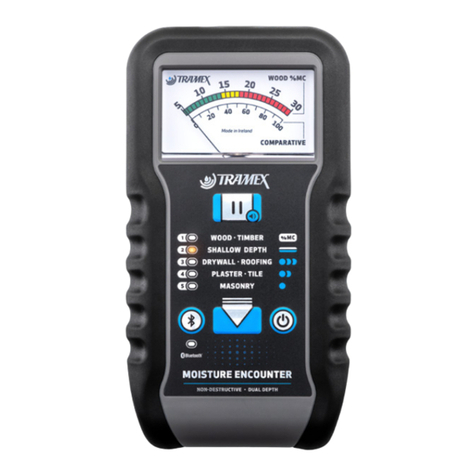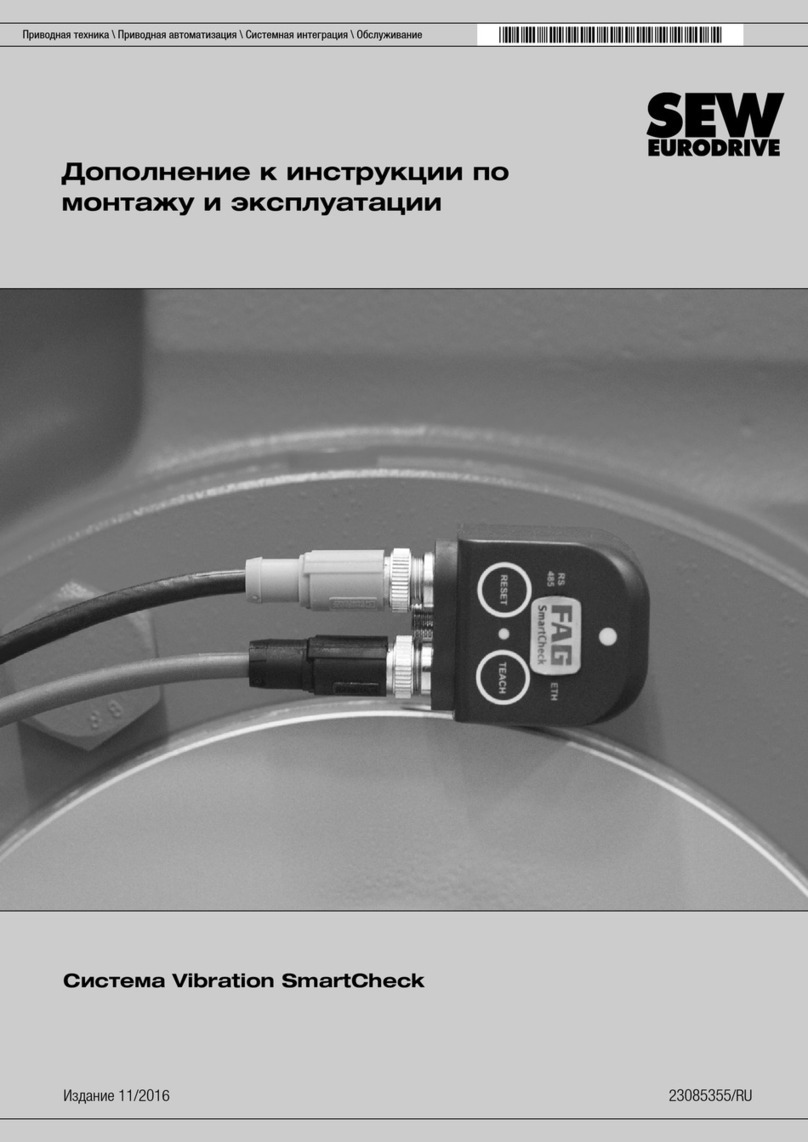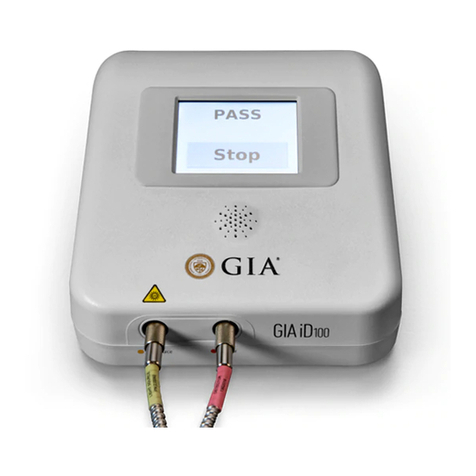
UL_–53 © Dinel, s.r.o.
13
It is also necessary to design and take measures to reduce the effects of static electricity to
a safe level in the wiring.
Installation in explosive atmospheres needs to be carried out in compliance with EN 60079-14
(Electrical installations for explosive gaseous atmospheres – Part 14: Electrical installations
in dangerous areas other than mining) and possibly also in compliance with other standards
relating to the area concerned.
Type ULM–53_–_ _–_–U–B(H)–_
The positive supply pole +U is connected to the
brown wire of the connected cable, the negative
pole is connected to the blue wire of the connect-
ed cable. Output voltage is connected to the black
wire of the cable.
Type ULM–53_–_ _–_–M–B(H)–_
Level meters are designed for connection to the
PLC input (RS–485). The positive supply pole +U
is connected to the brown wire of the connected
cable, the negative pole is connected to the blue
wire of the connected cable. Terminals A and B
of line RS-485 are connected to the yellow and
green communication wires. The ground terminal
of line RS-485 is connected to cable shielding.
Type ULS–53_–_ _–_–S–B(H)–_
The positive supply pole +U is connected to the
brown wire of the connected cable, the negative
pole is connected to the blue wire of the connect-
ed cable.
Type ULS–53_–_ _–_–P–B(H)–_
The positive supply pole +U is connected to the
brown wire of the connected cable, the negative
pole is connected to the blue wire of the connect-
ed cable. Load is connected to the black wire of
the cable.
Fig. 26: Connection diagram of the ULM level
meter with a voltage output (variant –U)
Fig. 27: Connection diagram of the level meter
with an RS–485 output (variant –M)
Fig. 28: Connection diagram of the ULS sensor
with S type output (two-state current switch 4
mA / 20 mA)
BN ()1
BU ()2
mA +U
0V
V
+U
0V
U
Uout
V
+U
0V
U
Uout
mA +U
0V
+U
0V
BN (1)
BU (2)
BK (3)
+U
0V
BN (1)
BU (3)
BK (4)
BN ()1
BU (3)
BN ()1
BU ()2
BK (3)
BN ()1
BU (3)
BK (4)
BN ()1
BU ()2
mA +U
0V
mA +U
0V
BN ()1
BU (3)
Fig. 29: Connection diagram of the ULS sensor
with P type output (PNP) with an open collector
+U
0V
BN (1)
BU (2)
BK (3)
legend:
BK – black WH – white
BU – blue YE – yellow
BN – brown GN – green
Wiring operations shall only be carried out without voltage!
Taking into account the potential occurrence of electrostatic discharge on non-conducting
parts of the level meter, it is necessary to ground the ange of level meters ULM–53Xi–20–F
and sensors ULS–53Xi–20–F, located in an explosive atmosphere, using a ground terminal!
The supply source should be preferably designed as a stabilized source of safe voltage 18 V
to 36 VDC (max. 30 V DCfor version Xi),which is part ofthe downstream processing or displaysystem.
In case of strong ambient electromagnetic disturbance, parallel run of the input cable with the power
line or its length exceeding 30 m, we recommend using a shielded cable.






















